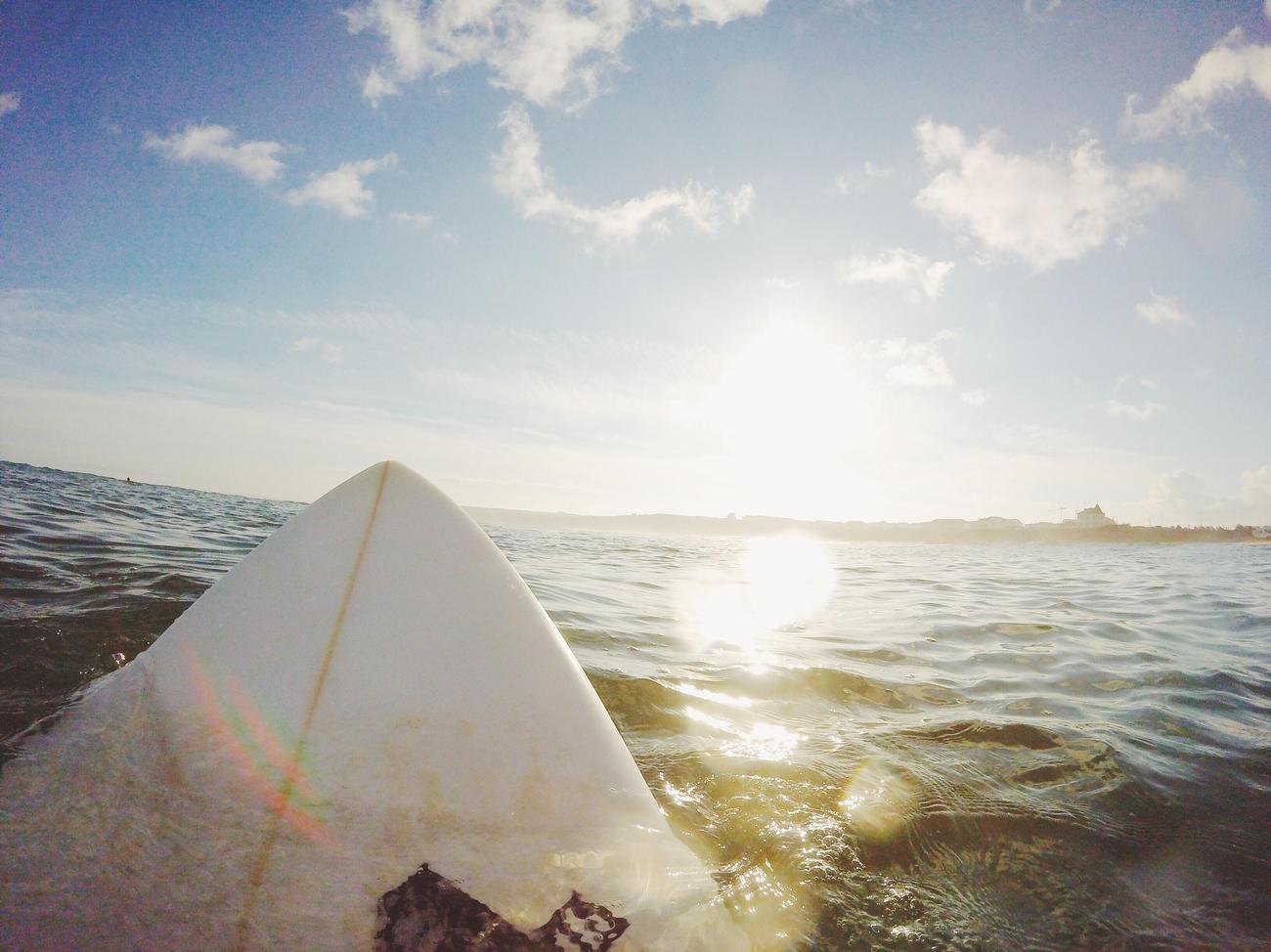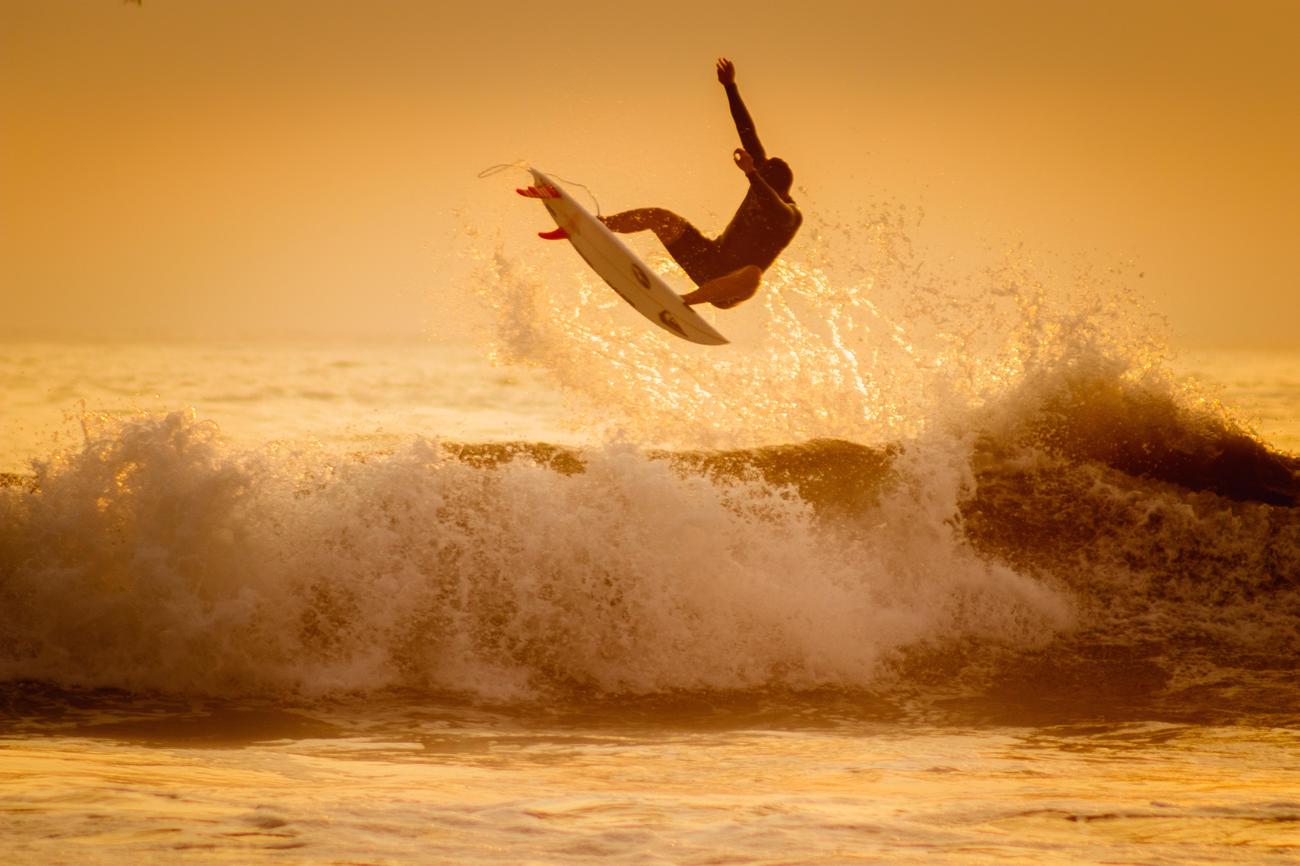Are you ready to ride the waves of history? In this riveting article, we will venture into the depths of time, pulling back the curtain on one of the greatest mysteries of the water world: Who invented surfing? As a seasoned journalist and historian, I have dedicated my life to unearthing the origins of various sports, but none have fascinated me quite like the enigma of surfing. Join me on this journey as we dive into ancient texts, examine archaeological evidence, and get to the heart of this timeless water sport. Get ready to hang ten as we uncover the true pioneers behind the art of riding the waves.

Who Invented Surfing
Surfing, the exhilarating and awe-inspiring water sport that has captured the hearts of millions, has a history as fascinating as the waves that enthusiasts ride. Delving into the origins of this sport opens up a world of mystery and exploration, as we attempt to unravel the identity of the individual who first harnessed the power of the ocean.
One of the earliest documented encounters with surfing dates back to 1778, when Captain James Cook observed native Hawaiians skillfully riding waves on wooden boards. This encounter not only introduced surfing to the Western world but also piqued the curiosity of historians and researchers who sought to unearth the true origins of this ancient sport.
Historical records that trace the roots of surfing often lead us to Polynesia, a region known for its rich seafaring culture. It is in Hawaii, around AD 400, that modern surfing is said to have originated. The Polynesians, specifically those who migrated from Tahiti and the Marquesas Islands, brought with them the knowledge and skills required to navigate the powerful surf.
However, the story doesn’t end there. Polynesian cave paintings discovered by archaeologists suggest that surfing may have been practiced by indigenous peoples even before the arrival of Captain Cook. These paintings, dating back to the 12th century, depict individuals riding waves on wooden surfboards, offering tantalizing clues to the ancient origins of this thrilling sport.
But what about beyond Polynesia? Is there evidence of surfing in other parts of the world? As it turns out, yes. The people of Peru, thousands of miles away from Polynesia, were also surfing on reed watercraft for fishing and recreation around three to five thousand years ago. This discovery adds another layer of complexity to the question of who invented surfing and demonstrates the widespread love for riding waves across different cultures and continents.
So, can we conclusively identify the individual who invented surfing? Unfortunately, the answer eludes us. Surfing, like many ancient traditions, was passed down through generations, without emphasis on individual recognition. It is a collective heritage, a testament to humanity’s intricate relationship with the sea. And while we may never pinpoint the exact person responsible for inventing surfing, what truly matters is the legacy they left behind.
As we surf through the mesmerizing waves of history, we come to realize that the origins of surfing are not confined to a single individual or place. It is a tapestry of ancient cultures, spanning centuries and continents, with each thread contributing to the grand narrative.
In the end, the question of “who invented surfing” transcends an individual’s identity and takes us on a journey of exploration and appreciation for an activity deeply intertwined with our connection to the ocean. Surfing is a testament to the indomitable spirit of humanity, forever seeking adventure and freedom amid the crashing waves. So, the next time you paddle out into the surf, remember that you are joining a lineage much bigger than yourself, a lineage that stretches back through time, shared by countless individuals who have embraced the call of the sea.
“The origins of surfing may forever remain a mystery, but the spirit of riding waves continues to captivate and inspire, uniting surfers across the ages.”
Surfing is a fascinating sport that combines athleticism, balance, and a love for the ocean. If you’re curious about the incredible world of surfing and want to discover some mind-blowing facts, you won’t want to miss out on our collection of amazing information. From the origins of surfing to the biggest waves ever ridden, our compilation of facts about surfing will leave you in awe. Want to learn more? Click here to dive into the world of surfing: facts about surfing.
Who doesn’t crave the thrill of catching a wave? If you’re curious about the fascinating origin of surfing, prepare to be enthralled. Dive into the depths of history and uncover the rich heritage behind this beloved water sport. Discover the secrets of how wave riding became an art form and a lifestyle. Embark on an incredible journey by clicking here to learn more about the origins of surfing.
As we delve into the enthralling world of surfing, it’s impossible to ignore the captivating allure of surfing history. From ancient Polynesian roots to the modern-day surf culture that spans the globe, the evolution of wave riding is an extraordinary tale. Uncover the milestones and pivotal moments that shaped surfing into the thrilling sport it is today. Journey through time by clicking here and explore the captivating history of surfing.
Ever wondered who first pioneered the noble art of surfing? Prepare to be amazed by the remarkable story of the surfing inventor. Discover the name behind the ingenuity and innovation that brought the joy of riding waves to the masses. Unveil the genius who turned an age-old tradition into a global phenomenon. Dive into this captivating tale by clicking here and learn about the visionary who forever changed the world of surfing.
So, what are you waiting for? Immerse yourself in the vibrant world of surfing and embark on a journey of exhilaration, discovery, and passion. Explore the origin of surfing, delve into the depths of surfing history, and uncover the genius of the surfing inventor. Click on the links above and let the waves of knowledge wash over you.
The Fascinating Evolution of Surfing
[youtube v=”jyn_orqdyHQ”]
The Origins of Surfing and its Cultural Significance
Surfing may be seen as a casual and recreational activity, but its history runs much deeper than many realize. The roots of surfing can be traced back to the Polynesian islands in the Pacific Ocean. It is believed that wave riding was practiced in various parts of the Polynesian Pacific, as well as in West Africa and Peru. However, it was in the Hawaiian archipelago that surfing flourished the most and was extensively documented.
For the Hawaiians, surfing was not merely a recreational pastime; it had spiritual and social significance. Surfing was governed by a code of rules and taboos known as kapu, which dictated every aspect of the activity. Hawaiians made offerings and sought the guidance of expert priests, known as Kahuna, when selecting a tree to carve their surfboards and praying for favorable waves. Different surf breaks were reserved for the elite, while competitions among surfers showcased their skill and earned respect and social status. Surfing was truly a central part of Hawaiian culture.
Traditional Surfboards and Riding Techniques
Surfboards in ancient Hawaii were crafted from trees such as koa, breadfruit, or weally weally. Hawaiians utilized various types of boards, including the Alaia boards, which were thin and mid-sized, resembling today’s short boards. Another popular type was the Paipo boards, short round-nosed boards that riders typically lay on their stomachs. However, only chieftains had the privilege to ride the massive Olo boards, which were twice as long as today’s longboards.
Unlike modern surfboards, these traditional boards were finless, requiring surfers to use their hands or feet to turn. This added an extra level of skill and physicality to the art of wave riding.
Surfing in History and Its Encounter With Western Culture
Although the exact origins of surfing are unclear, accounts of wave sliding have been found in Polynesia dating back centuries. The first Western record of surfing came from William Anderson, a surgeon on Captain Cook’s ship, who described witnessing surfing in 1777. However, when American Christian missionaries arrived in Hawaii several decades later, they deemed surfing sinful and discouraged its practice, along with other aspects of native culture.
Another challenge to surfing came in the late 19th century when diseases introduced by Europeans and Americans decimated the Hawaiian population, drastically reducing the number of native surfers. Additionally, the annexation of Hawaii by the United States in 1898 marked the end of Hawaiian independence. However, this period also coincided with a revival in surfing, which the American colonizers exploited.
Surfing Goes Global
In the early 1900s, surfing made its way overseas as Hawaiians like George Freeth and Duke Kahanamoku began showcasing the sport to audiences in California, Australia, and New Zealand. At the same time, Alexander Hume Ford, a settler in Hawaii, played a significant role in promoting surfing. Ford aimed to attract white Americans to Hawaii as tourists and residents and saw surfing as a strategic way to achieve this goal. While his demographic plan did not succeed, the promotion of surfing turned out to be a tremendous success.
Today, surfing is not only a popular sport but also a multibillion-dollar global industry with millions of enthusiasts worldwide. It is important to note that while many surfers may not be aware of the rich traditions and rituals associated with surfing, Hawaiians have sought to preserve their customs and ensure that history is not forgotten.
As the article highlights, surfing represents not just the story of individuals or cultures. It encompasses the indomitable spirit of humanity and its enduring connection to the ocean, serving as a testament to the universal quest for adventure and freedom.
“Surfing was not just a leisure activity but a deeply rooted spiritual and social practice for the Hawaiians, governed by a code of rules and taboos known as kapu.”
“Surfing, with its rich history and cultural significance, serves as a testament to the indomitable spirit of humanity in its search for adventure and freedom in the ocean.”
FAQ
Q: Is it true that Captain James Cook observed surfing in Hawaii in 1778?
A: Yes, the first written record of surfing comes from Hawaii in 1778 when Captain James Cook observed natives riding waves on wooden boards.
Q: Did surfing originate in Polynesia?
A: Yes, surfing is believed to have originated in Polynesia, specifically in Hawaii around AD 400. It was brought to Hawaii by Polynesians who migrated from Tahiti and the Marquesas Islands.
Q: Were there any earlier instances of surfing before Cook’s arrival in Hawaii?
A: Yes, historians claim that surfing was depicted in Polynesian cave paintings from the 12th century, indicating that indigenous peoples had been surfing for centuries prior to Cook’s arrival.
Q: Are there any other ancient cultures that were surfing?
A: Yes, archaeological evidence suggests that ancient cultures in Peru were also surfing on reed watercraft for fishing and recreation around three to five thousand years ago.
Q: How did surfing spread beyond Polynesia?
A: After its origins in Polynesia, surfing slowly spread to other parts of the world, with California becoming a hotbed for the sport in the early 20th century.
- China II Review: Delicious Food & Speedy Service - April 17, 2025
- Understand Virginia’s Flag: History & Debate - April 17, 2025
- Explore Long Island’s Map: Unique Regions & Insights - April 17, 2025
















